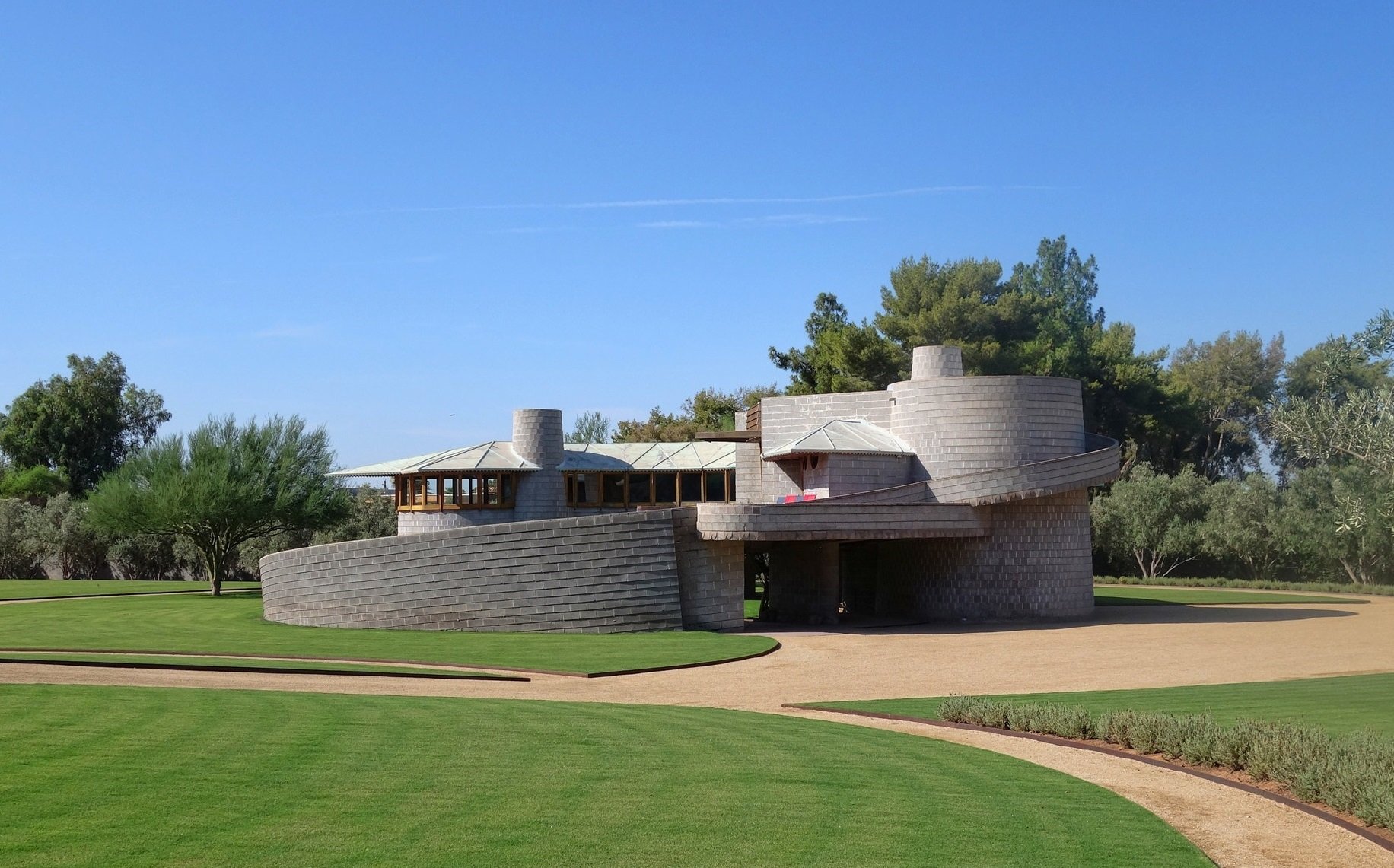#11479. Wright House Spiral Facade: Organic Architecture in the Desert
Before us is an impressive example of organic architecture — the David and Gladys Wright House in Arizona, designed by the great American architect Frank Lloyd Wright. This is one of his later works, created in the 1950s, where his concept of "organic architecture," harmoniously integrated into the surrounding landscape, is fully manifested.
The building's facade features Wright's characteristic flowing, curvilinear forms that create a sense of movement and connection with the natural environment. The main building material consists of textured concrete blocks that form a spiral structure reminiscent of a mollusk shell. This technique serves as both a decorative element and a structural solution.
Of particular note are the horizontal lines emphasizing the building's connection to the earth, and the round tower-like elements that serve not only as architectural accents but also as functional spaces. The glazing of the upper portion of the building with wooden frames creates a contrast with the massive stone walls and ensures natural light penetrates the interior spaces.
In designing your own home facade, several techniques can be borrowed: using local materials that harmonize with the surroundings; smooth transitions between architectural volumes; combining open and enclosed spaces; and natural continuation of the landscape in the building's architecture. Even with limited possibilities, organic forms can be used in details — rounded corners, flowing lines of cornices, or finishing elements.
